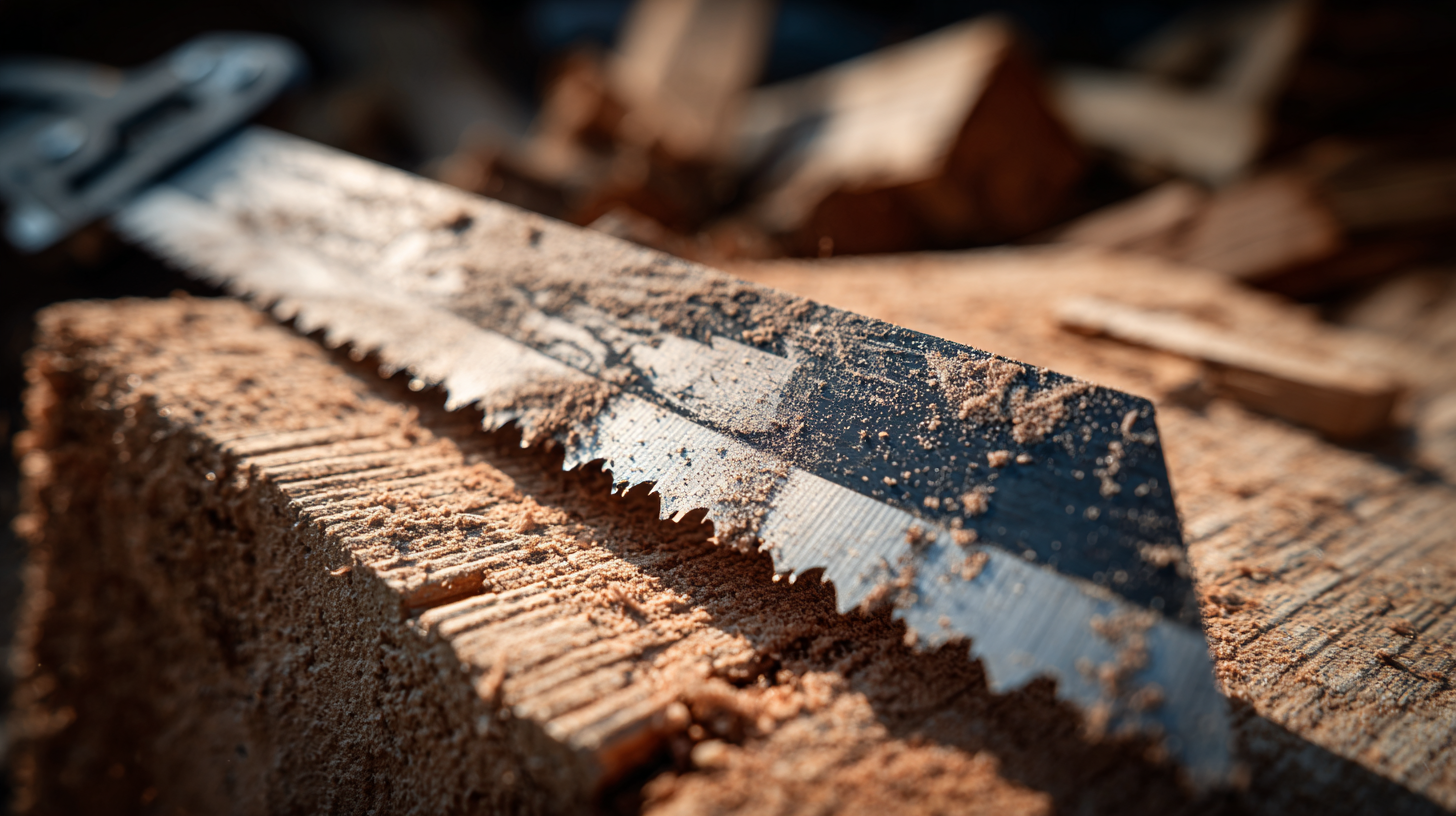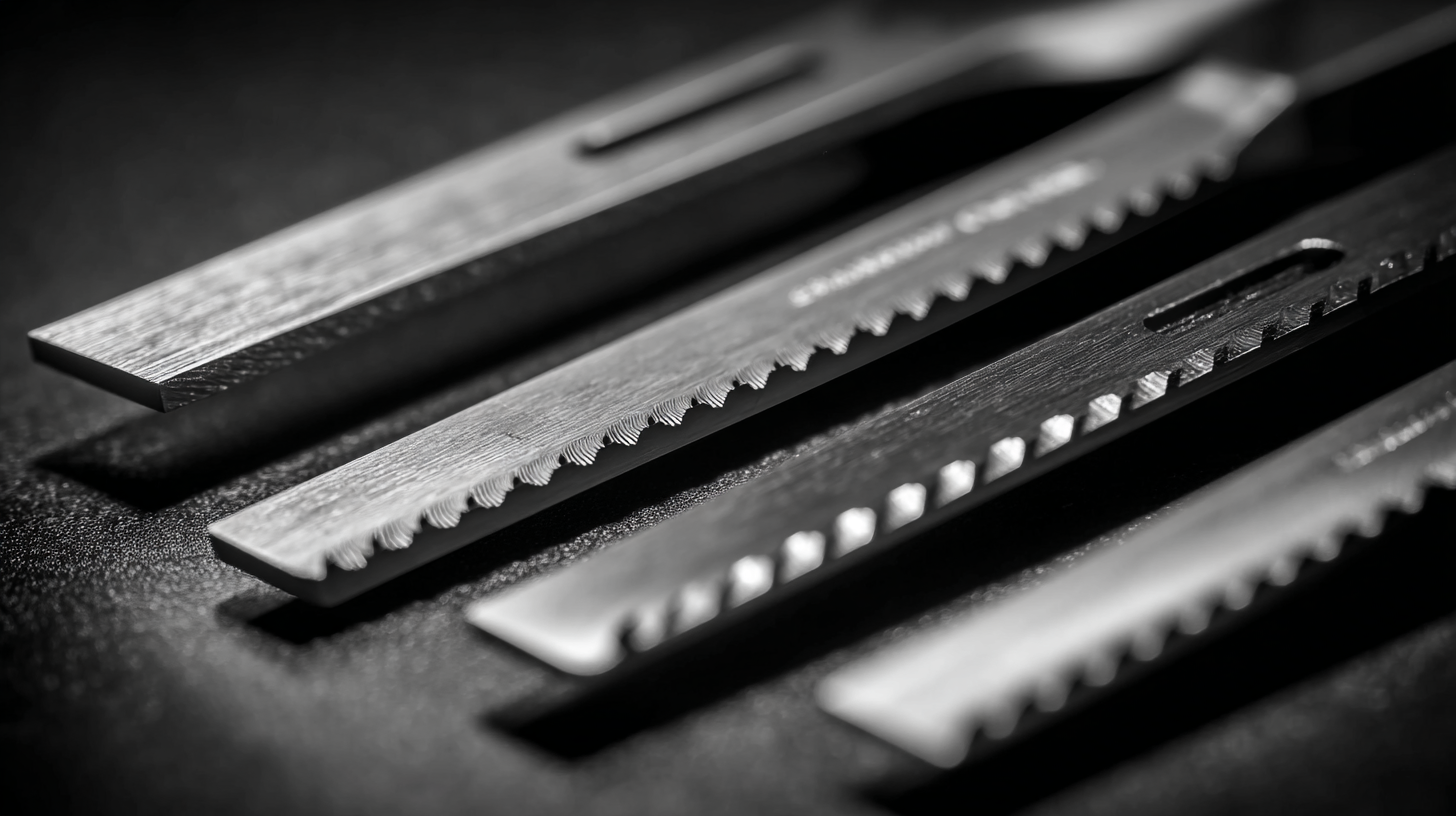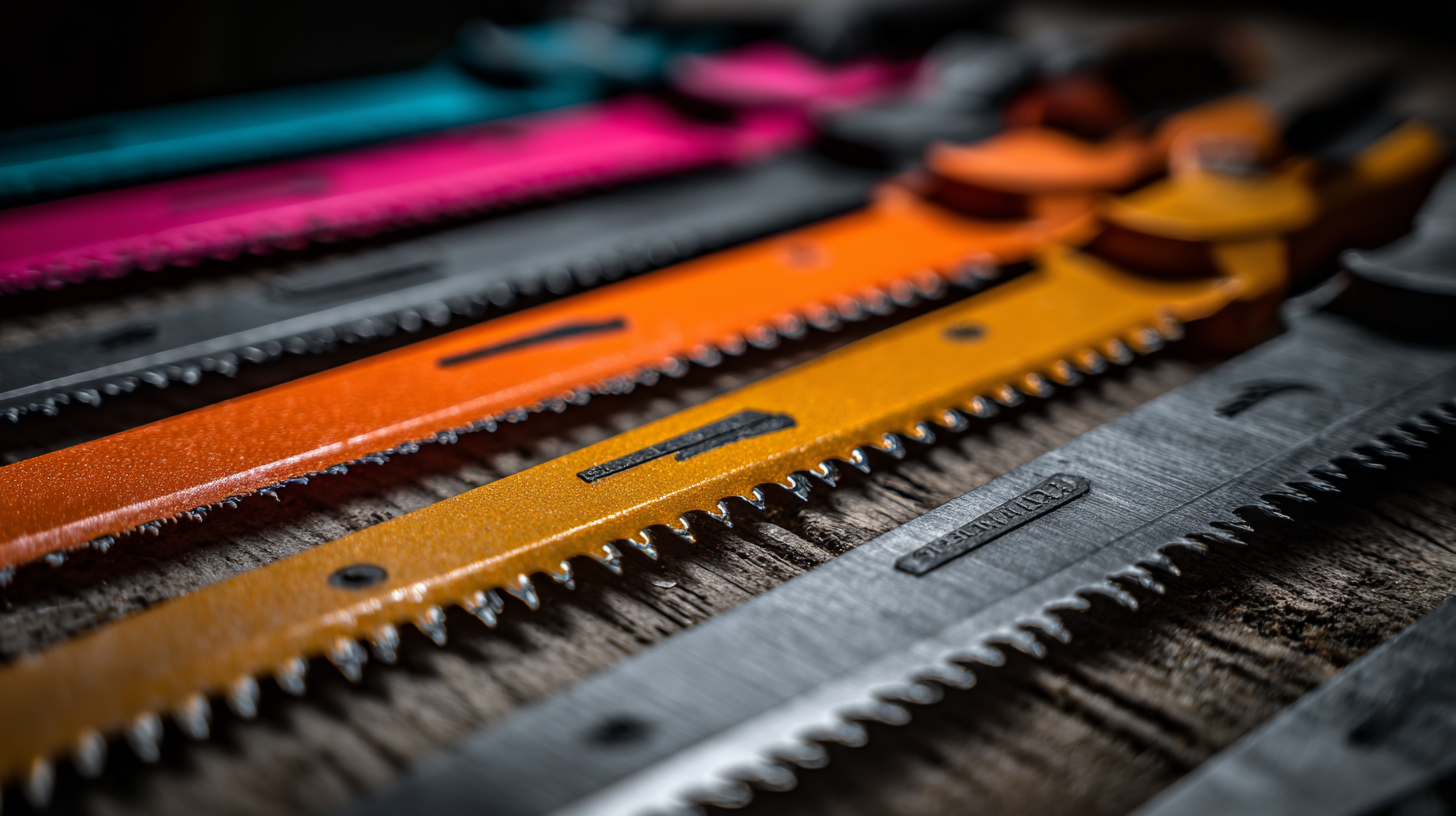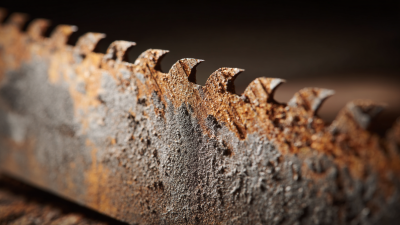Exploring Unique Alternatives in Sawzall Blade Types for Every Project
Table of Contents
- Understanding the Basics: What is a Sawzall and How Does It Work?
- Exploring the Standard Blade Types: What You Need to Know
- Innovative Blade Alternatives: Unconventional Choices for Unique Projects
- Material-Specific Blades: Choosing the Right Sawzall Blade for Different Materials
- Tips and Tricks: Maximizing Efficiency with the Right Blade Selection
- Safety First: Best Practices for Using Sawzall Blades Effectively
- FAQS
- Conclusion
- Related Posts
You know, in the always-changing world of power tool accessories, the variety of Sawzall blade types has really become a hot topic — whether you're a seasoned pro or just someone who's into DIY projects. I recently read some industry reports, and it turns out the worldwide market for electric tools is expected to hit around $46.5 billion by 2026. A big chunk of that is driven by reciprocating saws, which are super popular right now. At Wenzhou Yichuan Tools Co., Ltd., we've been around since 2003, and we focus on offering top-notch electric tool accessories — like all kinds of jigsaw blades and reciprocating saw blades designed to fit different needs and projects.

As more folks look for ways to make their work faster, cleaner, and more precise, it's really important to get a good understanding of the different Sawzall blade types out there. That way, you can choose the right one and get the best results. In this blog, I’ll dive into some of the latest options in Sawzall blades, so you can find the perfect fit for whatever job you're tackling.
Understanding the Basics: What is a Sawzall and How Does It Work?
So, have you ever heard of a Sawzall? Or as some folks call it, a reciprocating saw. Honestly, it’s one of those tools you definitely want in your toolbox, especially if you're into construction, plumbing, or just tackling DIY projects around the house. What makes it so handy? Well, it uses this back-and-forth pushing motion to slice through all kinds of materials—whether that's wood, metal, or plastic. Crazy, right? And get this: according to a report from Grand View Research, the global market for these saws was worth about $1.2 billion in 2022, and they expect it to grow by around 5% each year from 2023 to 2030. That just goes to show how useful this tool is in both professional jobs and weekend DIY adventures.
What really makes the Sawzall stand out is its versatility. Not only is it well-designed, but it also works with an assortment of blades, each suited for different tasks. Picking the right blade can seriously make your work easier and faster. For example, blades meant for cutting wood usually have fewer teeth per inch, so they cut faster but with a rougher finish. On the other hand, blades for metal have more teeth per inch, giving you a cleaner cut. Interestingly, according to the Canadian Standards Association, using the correct blade can boost your productivity by up to half. So yeah, understanding the specs of your blades can make a huge difference in getting the job done right and efficiently.
Exploring Sawzall Blade Types for Various Projects
Exploring the Standard Blade Types: What You Need to Know
 When you're choosing the right Sawzall blade for your project, it really helps to know the standard types out there. Basically, there are three main kinds: wood, metal, and multi-purpose. Each one is designed for specific materials, so you get the best cut and performance every time. For example, wood blades usually have bigger teeth and are built to cut through both soft and hardwoods quickly—perfect if you’re doing demolition or carpentry work.
When you're choosing the right Sawzall blade for your project, it really helps to know the standard types out there. Basically, there are three main kinds: wood, metal, and multi-purpose. Each one is designed for specific materials, so you get the best cut and performance every time. For example, wood blades usually have bigger teeth and are built to cut through both soft and hardwoods quickly—perfect if you’re doing demolition or carpentry work.
On the flip side, metal blades tend to have finer teeth and are made from high-carbon steel or bi-metal. That makes them great for cutting through various metals with pretty good precision. These are your go-to when you’re dealing with plumbing or HVAC projects where metal pipes come into play.
Then there are multi-purpose blades, which are pretty handy because they work okay on both wood and metal. So, if you’re looking for something versatile for general cutting, these are usually the way to go.
Getting a handle on these basic blade types can really help you make smarter choices, save time, and get better results in your projects. It’s honestly all about picking the right tool for the job—makes life a lot easier!
Innovative Blade Alternatives: Unconventional Choices for Unique Projects
When you're looking to upgrade your toolkit, exploring some new blade options for your Sawzall can really make a difference in how your project turns out. At Wenzhou Yichuan Tools Co., Ltd., we get it—no two cutting jobs are the same. Different materials and tasks call for specialized blade designs, and that’s why we’re pretty excited to share a few unconventional choices that might just change the way you tackle cuts with your reciprocating saw.
For instance, you might want to try carbide-tipped blades if you're dealing with really tough materials—they’re built for aggressive cuts. Or go with bi-metal blades if you need something versatile and durable for a variety of jobs. These kinds of blades are especially handy whether you’re a pro working on big renovations or a DIYer taking on some more complex projects. Our high-quality reciprocating saw blades are designed to handle all these different needs, making your cutting job smoother and way more efficient.
With over 20 years of experience in manufacturing, we’re all about supporting your creative projects with tools that are not just reliable but also innovative. Who knows? You might discover new possibilities you hadn’t even considered before, just by switching up your blades a little.
Exploring Unique Alternatives in Sawzall Blade Types for Every Project
| Blade Type | Material | Length (inches) | Tooth Count | Best For |
|---|---|---|---|---|
| Bi-Metal Blade | HSS & Steel | 12 | 18 | Wood & Metal |
| Carbide Grit Blade | Carbide | 9 | Non-applicable | Masonry & Tile |
| Thin Kerf Blade | High Carbon Steel | 12 | 10 | Wood Cutting |
| Plumbing Blade | Bi-Metal | 9 | 24 | PVC & Copper |
| Metal Cutting Blade | Bi-Metal | 12 | 14 | Steel & Aluminum |
Material-Specific Blades: Choosing the Right Sawzall Blade for Different Materials
When you're trying to pick the right Sawzall blade for different materials, it’s pretty important to think about what makes each one unique. For example, a bi-metal blade is usually a go-to for cutting through metal stuff. It’s made by combining high-speed steel and carbon steel, which means it’s both tough and flexible—perfect combo, right? According to a report I read in the International Journal of Advanced Manufacturing Technology, these bi-metal blades can actually last up to three times longer than your standard high-carbon steel blades when cutting metal. That’s a huge plus, especially if you’re looking to save some cash in the long run—whether you're a pro contractor or just DIY-ing around the house.
Now, if you're working on woodworking projects, blades with teeth per inch (TPI) between 6 and 10 are usually your best bet. There was this study in the Forest Products Journal showing that using the right TPI can really boost your cutting speed and even cut down on waste by up to 30%. Pretty neat! And when you’re dealing with materials like PVC or laminate, it’s worth using special blades designed just for those. They not only perform better but also help avoid chipping and splintering—trust me, no one wants a mess to deal with later. As the construction world keeps changing, understanding these little details about material-specific blades really matters if you want your projects to turn out just right.
Tips and Tricks: Maximizing Efficiency with the Right Blade Selection
Picking the right Sawzall blade can make a huge difference in how smoothly your work goes, no matter the project. Did you know that, according to the Freedonia Group, the world’s market for power tool accessories—like Sawzall blades—is expected to hit a staggering $10 billion by 2026? That just goes to show how much folks are relying on specialized tools across different industries these days. If you take a moment to learn about the different types of blades out there, you'll be better equipped to choose the perfect one for whatever you're cutting—be it wood, metal, or masonry.
For example, bi-metal blades are pretty popular because they’re tough and versatile, making them a solid all-around choice. The Power Tool Institute even found that users saw about a 40% boost in productivity when they picked the right blade for their material. And if you're tackling tougher cuts, carbide-tipped blades can really save your bacon—they last longer and give you cleaner cuts without wearing out too quickly. Just remember to think about what material and thickness you're working with before grabbing a blade; it’ll help you work faster, get better results, and keep your tools in good shape longer.
Safety First: Best Practices for Using Sawzall Blades Effectively
 Whenever you're working with Sawzall blades, safety should be front and center—no exceptions. It's super important to understand the different types of blades out there, but just as crucial is knowing how to use them safely. Always gear up with the right personal protective equipment, like safety glasses and gloves, to protect yourself from flying debris and sharp edges. Before you dive into a project, make sure your workspace is tidy and free of clutter, and find a solid footing—you don’t wanna slip! Take a moment to get familiar with the specific blade you're using since each one has its quirks and handling tips.
Whenever you're working with Sawzall blades, safety should be front and center—no exceptions. It's super important to understand the different types of blades out there, but just as crucial is knowing how to use them safely. Always gear up with the right personal protective equipment, like safety glasses and gloves, to protect yourself from flying debris and sharp edges. Before you dive into a project, make sure your workspace is tidy and free of clutter, and find a solid footing—you don’t wanna slip! Take a moment to get familiar with the specific blade you're using since each one has its quirks and handling tips.
Also, keep a good, firm grip on the saw and position your material carefully—that can really make a difference in keeping things safe. Try to avoid loose clothing or jewelry that could get caught. And seriously, don’t skip the training or skip reading the manual—knowing how the tool works is key. Always keep your hands and body well away from the blade’s path, and double-check that the saw is unplugged before swapping out blades. If you stick to these simple safety tips, you’ll be able to work confidently and smoothly with your Sawzall, while keeping accidents at bay.
FAQS
: Innovative blade alternatives include carbide-tipped blades for aggressive cuts and bi-metal blades that offer flexibility and durability for diverse applications.
Specialized blades are designed for particular materials and applications, making them ideal for professionals and DIY enthusiasts tackling complex projects.
Always wear personal protective equipment like safety glasses and gloves, maintain a stable footing, and keep the work area clear of unnecessary items.
Each blade type has unique characteristics that require different handling techniques, making it essential for safety and effectiveness during use.
Maintain a firm grip on the tool, properly position the material being cut, avoid loose clothing, and ensure your hands and body are clear of the blade's path.
Always ensure the tool is unplugged before replacing blades to avoid accidents.
Use high-quality reciprocating saw blades crafted to meet varying demands and suit your specific cutting tasks.
Large-scale renovations and complex DIY projects can significantly benefit from using specialized saw blades.
Adequate training on the operation of the tool and understanding the specific blade type are fundamental for safe and effective usage.
Wenzhou Yichuan Tools Co., Ltd. has over two decades of experience in manufacturing high-quality reciprocating saw blades.
Conclusion
In our blog, 'Exploring Unique Alternatives in Sawzall Blade Types for Every Project,' we take a close look at the ins and outs of Sawzall tools—explaining how they work and why they’re so important for a bunch of different cutting jobs. We go over the common blade types, sharing where they’re typically used, and also toss in some cool, unconventional blade options for those tricky, one-of-a-kind projects.
Plus, we stress how crucial it is to pick the right blades for specific materials. Doing so can really boost your cutting efficiency, whether you're a pro or just doing some DIY at home. We also share handy tips and tricks to help you choose the best blades and stay safe while using your Sawzall—because safety always comes first, right? This guide is all about helping you get the most out of your tools. And it’s complemented by Wenzhou Yichuan Tools Co., Ltd.'s dedication to making top-quality reciprocating saw blades that meet every user’s needs.
Related Posts
-

Understanding the Essential Features of Sawzall Blades for Wood Cutting
-

China Manufacturing Thrives Amid US China Tariff Challenges with Best Sawzall Blade Insights
-

Top 10 24-Inch Sawzall Blades from Chinese Manufacturers at the 137th Canton Fair
-

Global Trust in Chinese Manufacturing Discover the Best Sawzall for Cutting Metal
-

Exploring the Future of Best Sawzall Blades Metal Trends for 2025 Global Buyers
-

5 Essential Benefits of Using Carbide Grit Sawzall Blades in Heavy-Duty Industrial Applications
Blog Tags:





